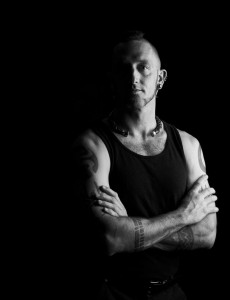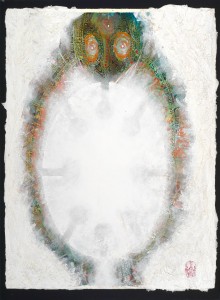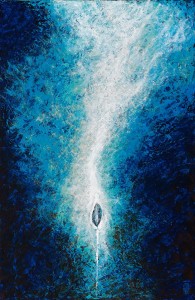One of the goals of the School of the Environment is to offer as comprehensive and integrative of a curriculum as possible. It is therefore with great pleasure that I introduce the School’s Artist-in-Residence for 2014, Mr. Martin Clark Bridge.
 From his website … “Martin is proudly carrying his family tradition forth as he lives, creates and teaches in the hills of Western Massachusetts. His work spans a wide range of media from Drawing, Painting, Sculpture, Theater Design and Site Specific Installations to Performance. His Spiritual Path as an Animist first and foremost influences his art. His work celebrates the sacredness inherent in nature, the consciousness in all things and power of place and seeks to challenge the cultural paradigms that dictate the way we relate to both the natural world and our brother and sisters. He strives to create work that improves his own awareness of how he relates to the natural world and invites viewers to contemplate how to live in better balance with the world around us. Through his work he hopes to inspire and cultivate a greater sense of mystery and possibility in our experience of the world.”
From his website … “Martin is proudly carrying his family tradition forth as he lives, creates and teaches in the hills of Western Massachusetts. His work spans a wide range of media from Drawing, Painting, Sculpture, Theater Design and Site Specific Installations to Performance. His Spiritual Path as an Animist first and foremost influences his art. His work celebrates the sacredness inherent in nature, the consciousness in all things and power of place and seeks to challenge the cultural paradigms that dictate the way we relate to both the natural world and our brother and sisters. He strives to create work that improves his own awareness of how he relates to the natural world and invites viewers to contemplate how to live in better balance with the world around us. Through his work he hopes to inspire and cultivate a greater sense of mystery and possibility in our experience of the world.”
As a Fellow with the School of the Environment, Martin Bridge has accepted a commission to paint an original piece to commemorate the inaugural session of the School. This image will be used on the School’s t-shirt (a tradition that I hope will continue with future artists-in-residence in the coming years), and the original will be placed on display at Middlebury College. Martin will also present an installation lecture, during which he will talk not only about the commissioned piece itself but about how it contributes to his larger exploration of arts and the environment.
Martin Bridge brings to this subject a diverse set of skills and world views that transcends traditional approaches to studies of art and the environment. He is a painter, sculptor, musician, architect, landscape designer, and mycologist … all of which both inform his practices and come together to create a more integrative reflection of the arts than any one practice alone could do. More than anyone else working in this area today, Martin Bridge lives his art, and his art comes alive (often literally) through him.
We are very pleased that he will be joining us during the second week of the summer session, and look forward not only to his presentation but to his deeper engagement with the students.
In the meantime, be sure to visit his website and its associated gallery. I am sure you will agree with me that his work dramatically throws open the door to explorations of arts and the environment.


